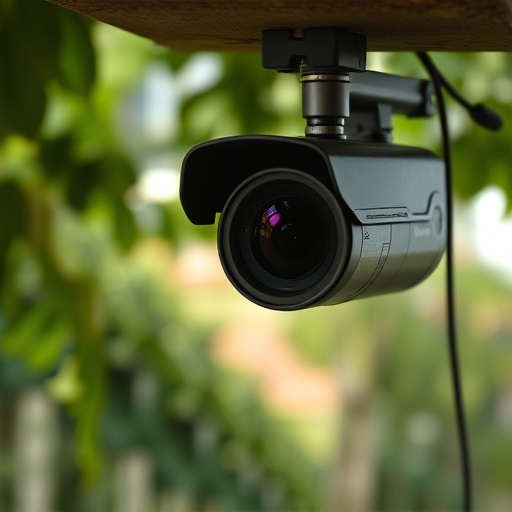Wireless Spy Camera Phone Apps have become a significant privacy concern in today's digital age, allowing attackers to remotely access camera feeds through malware installed via social engineering or security vulnerabilities. These apps transmit captured data without user knowledge, necessitating multi-layered defense including updates, antivirus solutions, and vigilance about suspicious app permissions. Mobile apps for detecting wireless spy cameras use image recognition and signal analysis to scan environments in real-time, alerting users to potential hidden devices. Despite enhancing privacy and security, their popularity raises serious privacy concerns, requiring careful selection from reputable sources, regular updates, encryption, and caution against unfamiliar downloads.
In the digital age, privacy concerns have grown with the proliferation of sophisticated spy equipment. One such threat is the wireless spy camera phone app, capable of capturing images or videos without user knowledge. This article delves into understanding how these apps operate, exploring detection methods through mobile applications, and highlighting popular tools in this field. We also discuss privacy risks and offer countermeasures to safeguard against such covert surveillance.
- Understanding Wireless Spy Camera Phone Apps
- How Mobile Apps Detect Hidden Cameras
- Popular Spy Equipment Detection Apps
- Privacy Concerns and Countermeasures
Understanding Wireless Spy Camera Phone Apps
Wireless Spy Camera Phone Apps have become a prevalent concern in today’s digital age, where privacy is often compromised. These apps, designed to evade detection, enable users to remotely access camera feeds from unsuspecting devices, posing significant risks to personal and corporate security. Understanding how they operate is crucial for developing effective countermeasures.
The typical Wireless Spy Camera Phone App works by installing malware on a target device, often through social engineering or exploitation of security vulnerabilities. Once installed, the app secretly captures video and audio data without the user’s knowledge. This information is then transmitted to the attacker’s server, allowing them to monitor activities remotely. Detecting these apps requires a multi-layered approach, including regular software updates, robust antivirus solutions, and being vigilant about suspicious permissions requested by applications on your phone.
How Mobile Apps Detect Hidden Cameras
Mobile apps designed for spy equipment detection leverage advanced technology, such as image recognition and signal analysis, to identify hidden cameras. These apps scan environments in real-time, examining visual feeds from a phone’s camera for unusual patterns or signs indicative of covert recording devices. By comparing these visuals against a database of known camera types and configurations, the app can alert users to potential wireless spy camera presence.
Additionally, these apps monitor radio frequency (RF) signals. Hidden cameras often transmit video data wirelessly using specific RF bands. The app detects these signals, pinpointing their location within a given area. This capability allows users to uncover covert surveillance equipment hidden behind walls or in other difficult-to-reach places, making them valuable tools for enhancing privacy and security measures.
Popular Spy Equipment Detection Apps
In the vast market of mobile applications, several tools have emerged as popular choices for spy equipment detection, offering users a sense of security in an increasingly digital world. One such standout app is the Wireless Spy Camera Phone App, designed to identify potential hidden cameras and other surveillance devices. This innovative software utilizes advanced algorithms and AI to scan through photos and videos, detecting subtle signs that might indicate the presence of spy equipment.
The app’s user-friendly interface allows individuals to quickly analyze their surroundings, making it an accessible tool for anyone concerned about privacy. By employing real-time image processing, it can identify common indicators of hidden cameras, such as invisible or infrared LEDs, allowing users to take proactive measures against potential surveillance threats. With regular updates and enhanced features, this app continues to be a preferred choice for those seeking to protect their personal spaces from unwanted intrusion.
Privacy Concerns and Countermeasures
The rise of wireless spy camera phone apps has sparked significant privacy concerns among users. These applications, designed to detect hidden cameras and spy equipment, have become popular due to their promise of enhanced security. However, they also raise questions about data privacy and potential misuse. When using such apps, it’s essential to understand that they often require access to a device’s camera, microphone, and other sensors, collecting and transmitting data in real time. This can lead to the exposure of personal information, especially if the app is not developed by reputable sources or lacks robust security measures.
To mitigate these risks, users should employ countermeasures such as thoroughly researching and choosing apps from trusted developers who prioritize user privacy. Regularly updating apps to their latest versions, which often include security patches, is also crucial. Additionally, enabling device encryption, using secure network connections, and being cautious of unfamiliar sources downloading software can further protect against potential privacy breaches associated with spy camera phone apps.
The rise of wireless spy camera phone apps has brought both convenience and concerns. By understanding how these applications detect hidden cameras, users can stay vigilant against potential privacy breaches. While popular apps offer valuable tools for identification, it’s crucial to balance their use with privacy considerations. Regular updates and robust encryption are essential to protect personal data in this evolving digital landscape. Always remember to check app permissions and remain cautious when using public spaces to maintain control over your privacy.
